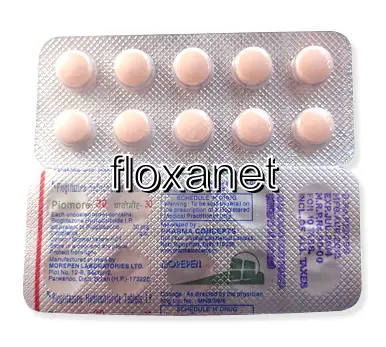| Package | Dosage | Price | Price per Dose | |
|---|---|---|---|---|
| Dosage: 15mg | ||||
| 360 pill | 15mg | €259.79 | €0.72 | |
| 180 pill | 15mg | €140.52 | €0.78 | |
| 120 pill | 15mg | €101.55 | €0.85 | |
| 90 pill | 15mg | €81.47 | €0.91 | |
| 60 pill | 15mg | €59.03 | €0.98 | |
| 30 pill | 15mg | €34.23 | €1.12 | |
| Dosage: 30mg | ||||
| 360 pill | 30mg | €446.37 | €1.24 | |
| 180 pill | 30mg | €242.08 | €1.35 | |
| 120 pill | 30mg | €175.94 | €1.46 | |
| 90 pill | 30mg | €140.52 | €1.56 | |
| 60 pill | 30mg | €100.37 | €1.67 | |
| 30 pill | 30mg | €55.49 | €1.84 | |
| 10 pill | 30mg | €21.24 | €2.07 | |

Pioglitazone Description
Overview of Pioglitazone
Pioglitazone is an oral medication primarily used to treat type 2 diabetes mellitus. It belongs to the class of drugs known as thiazolidinediones, which work by increasing the body's sensitivity to insulin. This helps in lowering blood sugar levels and maintaining better control over the condition. As a prescription medication, pioglitazone is prescribed by healthcare providers because of its specific effects and potential side effects.
Mechanism of Action
Pioglitazone acts on the peroxisome proliferator-activated receptor gamma (PPARγ), a type of nuclear receptor. Activation of PPARγ enhances the transcription of insulin-responsive genes involved in glucose and lipid metabolism. Consequently, the body responds more effectively to insulin, reducing insulin resistance. This improved sensitivity assists in controlling blood glucose levels and can have positive effects on lipid profiles, including lowered triglycerides and increased HDL cholesterol.
Benefits and Effectiveness
Patients using pioglitazone often see a noticeable improvement in blood sugar control when combined with diet and exercise. It is especially useful in patients who do not achieve adequate control with other oral hypoglycemic agents. Some users report an improvement in insulin resistance and better metabolic parameters over time. However, this medication’s effectiveness can vary among individuals, and it is typically part of a broader treatment plan that includes lifestyle changes.
Potential Side Effects
Like all medications, pioglitazone can cause side effects. Common adverse effects include weight gain, fluid retention, and possible swelling, which may lead to or exacerbate heart failure in susceptible individuals. Some users might experience anemia or headaches. Rare but serious side effects include liver problems and an increased risk of bladder cancer, which warrants regular medical monitoring. Patients should discuss their medical history with their healthcare provider to ensure safe use of this medication.
Precautions and Interactions
Before starting pioglitazone, it is important to inform the doctor about any history of liver disease, heart failure, or bladder cancer. Regular liver function tests are recommended during treatment. Pioglitazone can interact with other medications, such as insulin or other antidiabetic drugs, potentially increasing the risk of hypoglycemia. It is essential to follow the prescribed dosage and schedule to minimize risks and achieve the best therapeutic results.
Usage Recommendations
The medication is typically taken once daily, with or without food. Dosage varies based on individual health conditions and response to treatment. Patients should adhere to their healthcare provider’s instructions tightly and report any unusual symptoms, such as persistent swelling, weight gain, or abdominal pain. Consistent monitoring of blood glucose levels and periodic medical evaluations are vital to ensure effective and safe therapy with pioglitazone.
